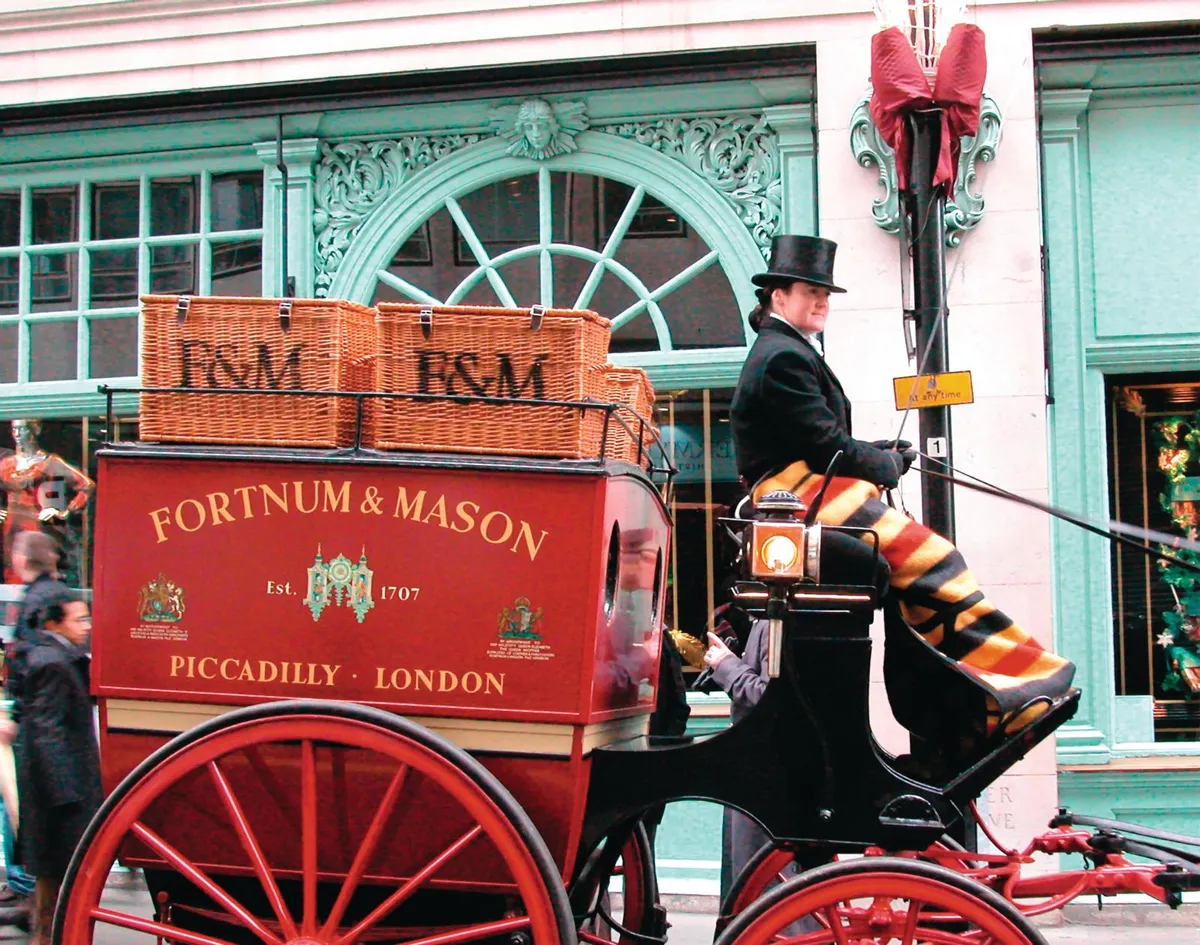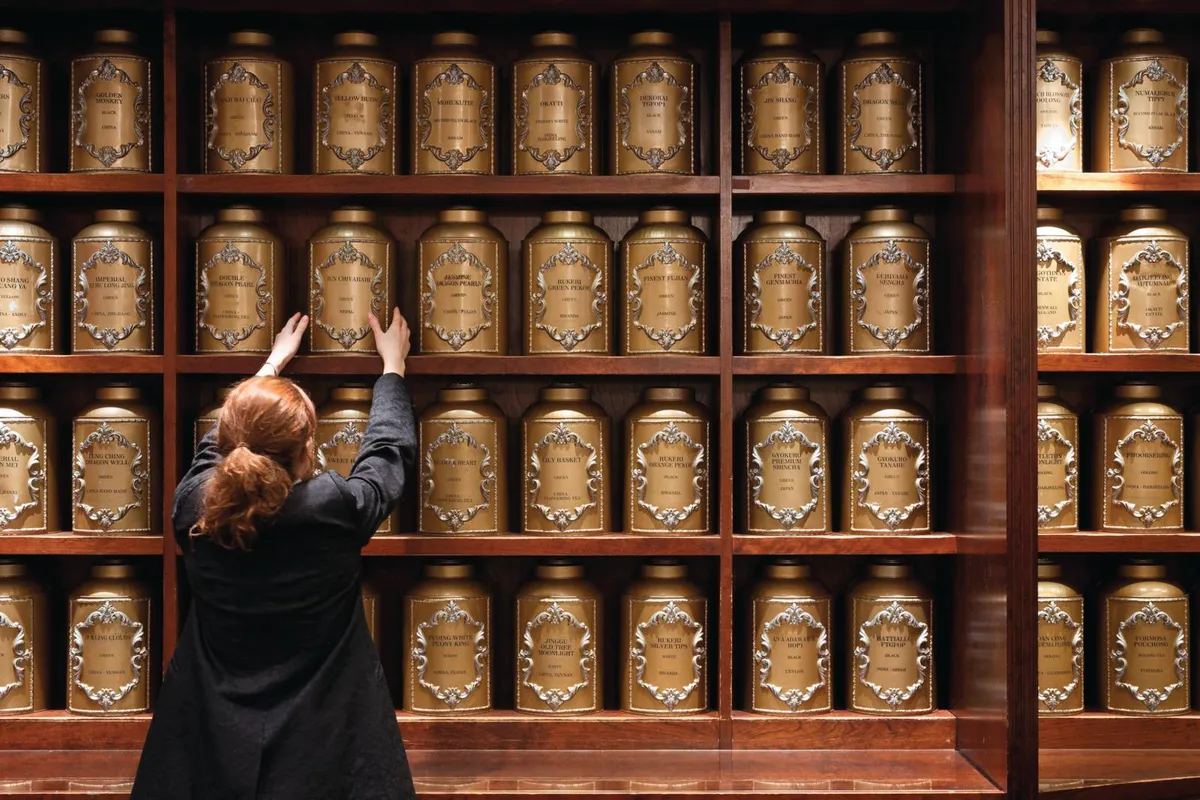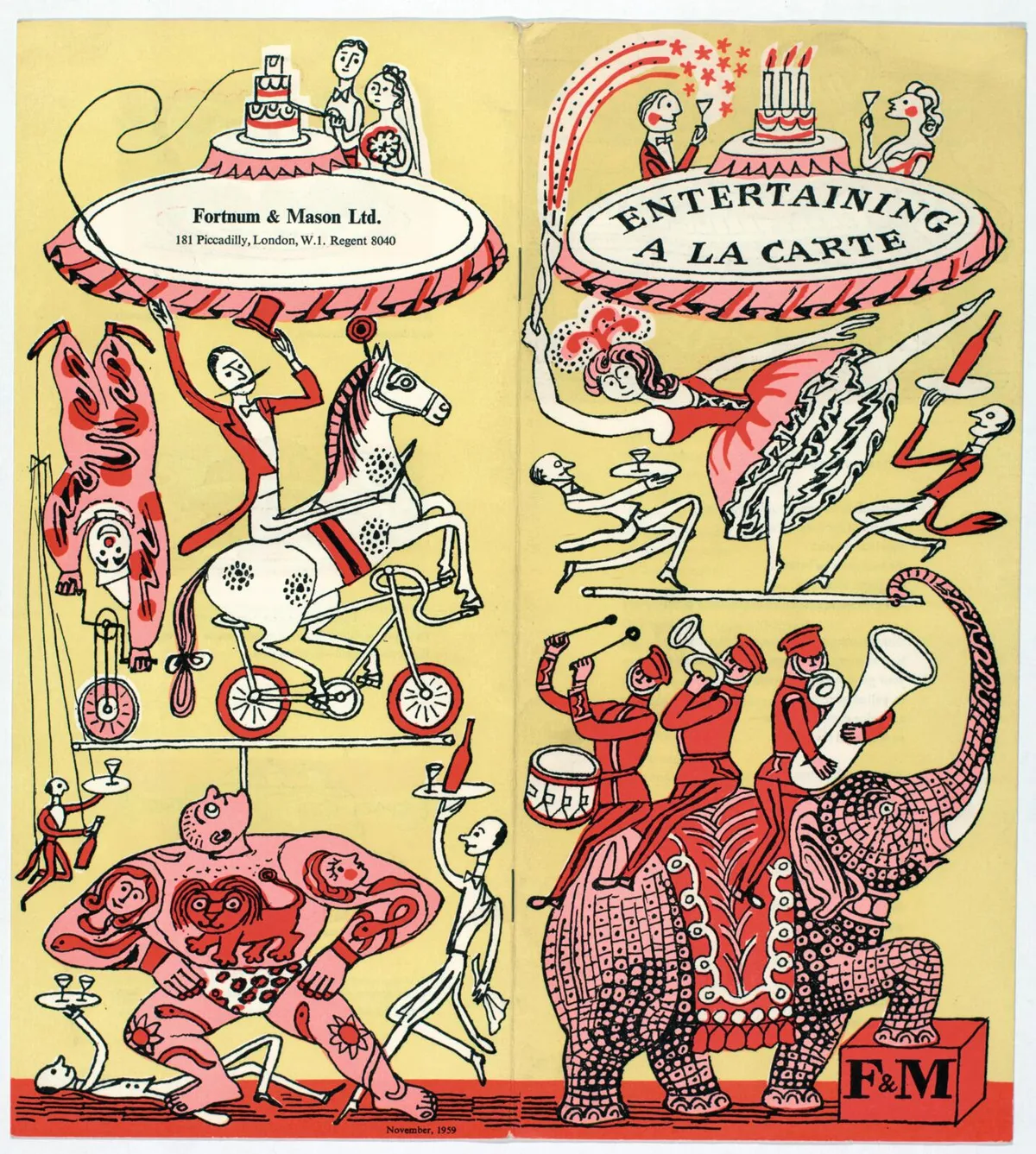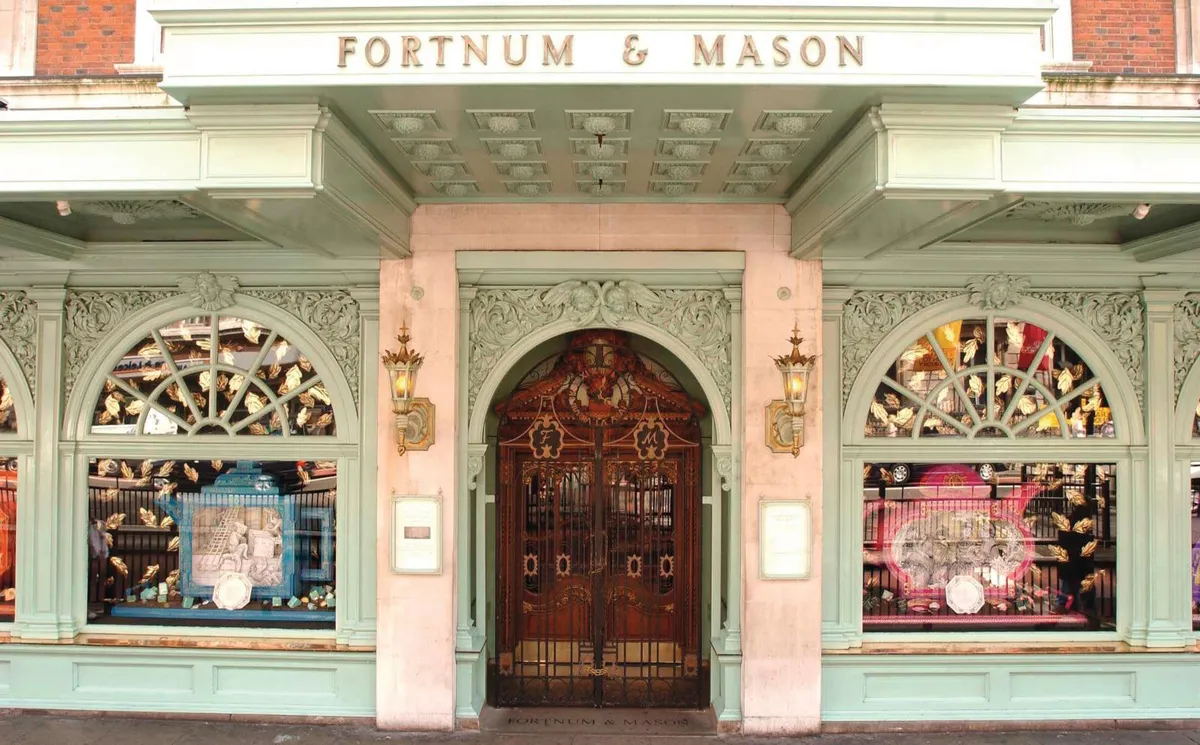Fortnum & Mason’s association with the monarchy is nestled somewhere in the subconscious – it’s an intrinsic part of the company’s history that has helped to establish its reputation as a luxury brand. The relationship goes right back to the company’s foundation over 300 years ago, when William Fortnum was a footman at the court of Queen Anne. One of the perks of Fortnum’s job was to empty the half-burned candlesticks and take the leftover wax home, where he remelted them and resold them to ladies of the court.
Hugh Mason, meanwhile, had already started up his small grocery store in Duke St, St James’s Market, when he met William Fortnum and became his landlord. With William’s palace connections, Mason found himself in an excellent position to sell commodities to the gentry and aristocracy and, by 1707, Fortnum & Mason had been established.
In 1840, William’s great-grandson, Richard Fortnum, ploughed the company’s profits into the new building at 181 Piccadilly, where the shop stands today. With its elegant fanlights and decoration, ‘the designers of the building were deliberately inviting women customers inside to look at the wares on show,’ says Dr Andrea Tanner, Fortnum & Mason’s archivist.

Its innovative use of plate glass windows – only invented three years earlier – further encouraged customers to experience the wonders within and became an important part of Fortnum’s advertising strategy, especially at Christmas. During the 1860s, displays included a live turtle in a tank (to show that the turtle soup was made from real turtles!) and a rose-tinged honey, backlit by the windows, that was specially produced using a method that didn’t kill the bees. ‘It’s an interesting building,’ adds Andrea. ‘It looks old-fashioned but is very modern; a theme of Fortnum & Mason.’
Tea is the driver of the business, says Andrea, as much now as it was at the beginning. Black Bohea tea from China was one of the first products Fortnum’s sold, and records suggest it was also the first company to buy Indian tea at the first Indian tea auction in 1836. The company’s historic house blends are also of note: when Edward VII acceded the throne in 1901, Fortnum’s created the ‘Royal Blend’ for the new monarch, using Assam brought back from India and Flowery Pekoe from Sri Lanka. This famous tea is still popular today.
Fortnum’s has been producing hampers since the 18th century, too, though in the beginning they were designed for travellers, only becoming popular for picnics at the end of the 1700s. ‘Derby Day was a particularly important day in the calendar, with carriages queuing up from four in the morning to pick up the Fortnum’s picnic basket,’ says Andrea.

Nowadays, Fortnum’s hampers, filled with the very best products from the Food Hall, will be seen at summer events like Ascot, Wimbledon and Henley, while at Christmas they are given as gifts to loved ones. These ‘parcels of joy’ continue to speak of luxury. When the Diamond Jubilee Tea Salon was opened by The Queen in 2012, accompanied by the Duchesses of Cornwall and Cambridge, the visit culminated in the presentation of three bespoke hampers. There couldn’t have been a more fitting gift for the royal guests, says Andrea: ‘It is the ultimate symbol of Fortnum’s.’
In the early days, most of Fortnum’s custom was via account, and catalogues contained no prices; it was understood that, if you had to ask, you couldn’t afford to shop there. It is company policy not to name celebrity customers still living, but Charles Dickens famously mentions the company in Household Words and was a fan of Fortnum’s chocolate. In Andrea’s archives, a note from Dickens to his butler instructs him to buy ‘a small cooked ham and a small Yorkshire pie from Messrs Fortnum & Mason’.
And, of course, the connection with royalty continues to be very important. Their endorsement has been a cornerstone of the company’s success from the outset and is, in many ways, still employed today as a discreet and effective marketing tool, concedes Andrea. Currently, Fortnum’s holds two royal warrants – one from The Queen and one from the Prince of Wales.

Closely linked to the royal connection is Fortnum’s strong relationship with the British armed forces. Historically, the company has supplied messes whenever there was conflict; in 1854 they sent beef tea to Florence Nightingale and her nurses in Crimea, by royal request of Queen Victoria. And after the outbreak of the First World War, the whole of the first floor was given over to officers’ supplies – uniforms, weaponry, medicated toilet paper, lemonade tablets, patented trench watches and more. ‘It was the most enormous enterprise,’ says Andrea.
Fortnum’s added several new departments during the inter-war period, including an expeditions department that supplied every Everest expedition from 1922 onwards. The sports department sold tennis courts and laid them for you (while bringing in experts from Wimbledon to teach serve and volley). And, in an attempt to solve the ‘servant problem’ of the South East – a shortage of domestic servants who went back to work after the war – a new demonstration kitchen offered the ladies of London a chance to learn classic French cookery with Marcel Boulestin.
During the 1920s, the company started to advertise for the first time, creating Fortnum’s Commentaries, which were sent out three to four times a year to account customers as a subtle reminder to fill their store cupboards. This ‘direct mail with a stylish twist’ proved incredibly successful, and is largely attributed to the input of several young artists of the time, including Rex Whistler, William Hendy, Cedric Morris and Edward Bawden. Bawden, in particular, was felt to have perfectly captured the spirit and essence of Fortnum’s.

Together with artist Ruth Gill, he also created the original F&M monogram, incorporating the company’s signature shade, eau-de-nil, which was inspired by features of both of Fortnum’s buildings. Today, this colour is instantly recognisable as Fortnum’s; used as the exterior paint shade, throughout the product packaging, and as background colour to the landmark clock designed by Berkeley Sutcliffe.

Change has been essential to the company’s growth over the years. The controversial atrium, added to the middle of the building between 2005 and 2007, for example, aimed to show people that there was more to Fortnum’s than just the chocolate counter. And back in 1951, when Canadian businessman Garfield Weston bought the company, he created the Soda Fountain, a new American-style restaurant that became known for its knickerbocker glories. ‘I get lots of nostalgic letters from people who remember being taken to Fortnum’s at the age of five or six, where they had their first knickerbocker glory that was bigger than they were,’ says Andrea.

This nostalgia and the sense of tradition you get when you step inside Fortnum’s is also key to its success, Andrea believes. ‘The building sells history, and people are buying a piece of history – but it has to be relevant. To endure, you have to constantly reexamine. There’s a fine line between being a heritage brand and recognising what people want to buy today.’ A line that Fortnum & Mason continues to tread so well.
